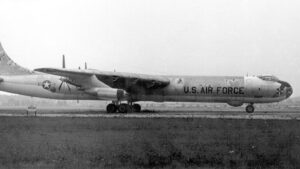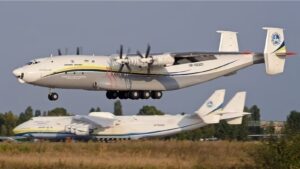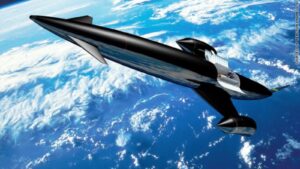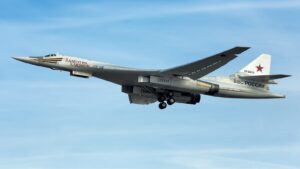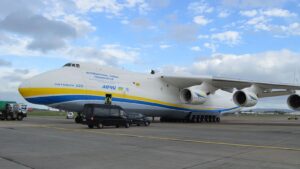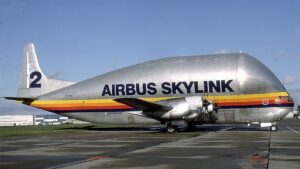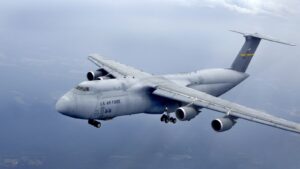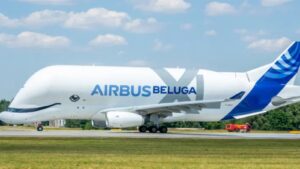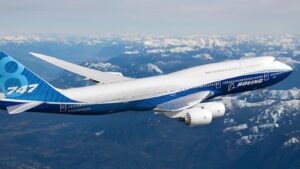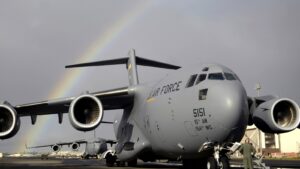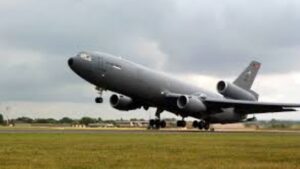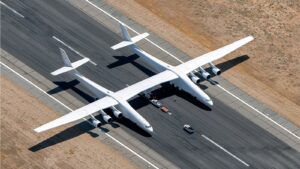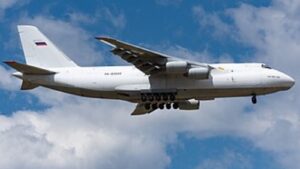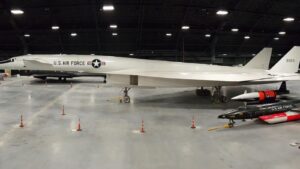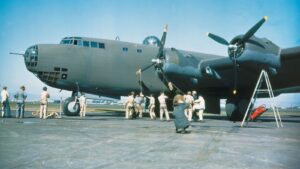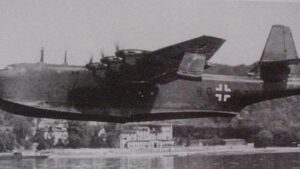Top 20 Abnormally Large Airplanes That Actually Exist
Summary
Top 20 Abnormally Large Airplanes That Actually Exist. The jewel of flight never ceases to amaze, and the spectacle is that much more unbelievable when the aircraft are longer than Olympic swimming pools, heavier than the world’s biggest tanks, and […]
Top 20 Abnormally Large Airplanes That Actually Exist. The jewel of flight never ceases to amaze, and the spectacle is that much more unbelievable when the aircraft are longer than Olympic swimming pools, heavier than the world’s biggest tanks, and taller than 5-story buildings. You will be amazed to know the top 20 unbelievably large airplanes that actually exist.
Cargo plane
Video: Top 20 Abnormally Large Airplanes That Actually Exist
Convair B-361
This aircraft, Peacemaker, was the primary nuclear weapon strategic bomber of the USAF Strategic Airline Command from 1948 to 1959, as this airline started to be replaced in this role from 1955, when the Boeing B-52 Stratofortress was first introduced, with all being replaced 1958-1959. This airline had a range of 16,000 km, meaning it became the first bomber with an unrefueled intercontinental striking range—enough to fly from the east coast of the USA to Moscow and back. In the 11 years the B-36 Peacemaker was in service, it was never used in combat. Its role as a nuclear deterrent to the Soviet Union during the Cold War could not have been better summed up than in its name. So yes, technologically, this is one of the abnormally large airplanes in aviation history.
Video: Top 20 Abnormally Large Airplanes That Actually Exist
Antonov AN-22
This airplane is a heavy military transport aircraft designed by the Antonov Design Bureau in the Soviet Union. Powered by four turboprop engines, each driving a pair of contra-rotating propellers, the airline design was the first wide-body transport aircraft and remains the world’s largest turboprop-powered aircraft to date. The An-22 airline first appeared publicly outside the Soviet Union at the 1965 Paris Air Show. The fact is, the model saw extensive use in major military and humanitarian airlifts for the Soviet Union and is still in service with the Russian Air Force.
Skylon
The currently proposed airline model D1 is a large vehicle, possessing a length of 83.13 meters and a diameter of 6.30 meters. The fuselage of this airplane is expected to be a silicon carbide-reinforced titanium space frame, a light and strong structure that supports the weight of the aluminum fuel tanks and to which the ceramic skin is attached. The fact is multiple layers of titanium foil thermal insulation are sandwiched between the skins and frame to protect the inside of Skylon from the heat of hypersonic flight and the intense heat of re-entry.
Tupolev TU-160
This airplane is a variable-geometry wing aircraft. The aircraft employs a fly-by-wire control system with a blended wing profile, and full-span slats are used on the leading edges, with double-slotted flaps on the trailing edges and cruciform tail. The Tu-160 has a crew of four: pilot, co-pilot, bombardier, and defensive systems operator in K-36LM ejection seats. On 10 June 2010, two Tu-160s carried out a record-breaking 23-hour patrol with a planned flight range of 18,000 km. The bombers flew along the Russian borders and over neutral waters in the Arctic and Pacific Oceans.
Boeing 777-200
The Boeing 777-200 is a passenger plane made in the United States. It can accommodate 440 passengers in a single-class system and 400 in a two-class configuration. It has a travel range of 14,260 kilometers or 7,700 nautical miles. These Boeing retirements began before the current crisis and continue throughout 2020. British Airways, Delta Airlines, and Singapore are among the airlines that are saying goodbye to the aircraft. Of course, another abnormally large airplane in the world. I wish to travel once in my life.
Airbus A380-800
The Airbus A380 800 is a passenger plane made in France with a capacity for 853 passengers in a single class or 644 in a two-tiered class. It has a travel range of 8,208 nautical miles or 15,200 kilometers. It first took flight on 27 April, 2005. As of 30 September 2020, 242 aircraft have been manufactured; however, due to poor sales, Airbus announced the A380-800 retirement in 2021. With 114 A380s in its fleet and eight pending delivery, Emirates is currently the main operator of the A380 and intends to stay one in the future.
Antonov An-225 Mriya
By most metrics, the Antonov An-225 is the biggest plane in the world. The Antonov Design Bureau in the Ukrainian SSR built just one of these monster cargo aircraft. Antonov designed it to carry the Buran spaceplane as well as Energia rocket boosters, but the plane quickly found other airlifting work after being refurbished following the collapse of the Soviet space program. The An-225 is the heaviest aircraft ever built, with a maximum takeoff weight of 710 tons. It holds the record for total airlifted payload at 559,580 pounds, as well as airlifted single-item payload at 418,830 pounds.
Aero Space lines Super Guppy
A guppy might be prey, but the Super Guppy is a predator. The bloated aircraft has been retired by every institution in the world except for one: NASA. The U.S. space agency finds the Guppy’s wide dimensions perfect for transporting spacecraft and rocket components. The first Super Guppy was constructed from a ballooned fuselage taken from a Boeing C-97 Stratofreighter, which first flew in 1965. The turboprop cargo plane was largely replaced by the Airbus Beluga for large and awkwardly shaped cargo delivery.
Lockheed C-5 Galaxy
With a payload capacity of almost 135 tons, the C-5 Galaxy is the largest aircraft routinely operated by the U.S. military. The Air Force announced it was reactivating the monster airlifter in May 2017. The C-5 has enough cargo space to carry two M1 Abrams tanks, 16 Humvees, three Black Hawks, or a variety of other vehicles. Without cargo, the C-5 can fly up to 7,000 miles without refueling, making it the longest-range military airlifter in the world. When the Air Force needs a lot of tonnage moved quickly, it turns to the C-5.
Boeing 747 Dreamlifter
In the 2000s, Boeing found it needed a cargo plane with an enormous amount of storage to transport components for the 787 Dreamliner, which has parts made all over the world. The solution was to take its biggest plane, the 747, and build a custom cargo hold around it. At 65,000 cubic feet, the Dreamlifter has the largest cargo hold in the world, capable of carrying three times the volume of a 747-400F freighter. The four Dreamlifters Boeing made also use the longest cargo loader in the world and can haul payloads up to 125 tons.
Read More: Extremely Dangerous Airports in the World Will Blow Your Mind
Boeing B-52 Stratofortress
The B-52 entered service in 1955, and the first B-52H, the current model, debuted in 1961. The B-52 bomber is the grandfather of the Air Force: aging but still capable of delivering a serious punch. The BUFF can carry 70,000 pounds of weapons, from precision-guided conventional bombs to nuclear warheads. While the B-2 stealth bomber and B-1 supersonic bomber could be retired when the B-21 is introduced, the Air Force wants to outfit the reliable B-52 with new engines to improve efficiency and range.
Airbus Beluga
The Airbus A300-600 Super Transporter, commonly called the Beluga, was specifically designed to transport large and awkward aircraft parts, similar to the Dreamlifter airline. Entering service in 1995, the aircraft largely replaced the Super Guppy, serving European needs for large air cargo. Different parts of the craft were designed and built by Airbus engineers across Europe, in countries including the U.K., Germany, France, and Spain. Its 124-foot-long payload bay can carry almost 52 tons.
Boeing 747
The Dreamlifter is already on the list, but it only represents a small part of the accomplishments of the Queen of the Skies. Boeing has built over 1,500 Boeing 747s, and the planes have served as the largest passenger and cargo aircraft in the world. Plus, Iron Maiden even has one called Ed Force One. The aircraft is being phased out of airlines in favor of single-aisle designs that can now fly with enough range to cross the oceans. But as the only U.S. mass-manufactured four-engine jumbo jet, the Boeing 747 has some years in it yet.
Boeing C-17 Globemaster III
The C-5 Galaxy may be the U.S.’s biggest military plane, but the C-17 Globemaster is the primary workhorse. The aircraft took its first flight in 1991, and 279 Globemasters have been built since. The C-17 airlifter can haul about 85.5 tons into the sky, flying missions around the world to transport troops and cargo, perform airlifts and medical evacuations, and fly airdrop routes. In 2020, the hulking aircraft joined the global fight against COVID-19 when it took to the skies to deliver supplies to countries around the world whose resources were stretched by the pandemic.
McDonnell Douglas KC-10 Extender
The McDonnell Douglas KC-10 Extender is the largest fuel capacity tanker aircraft in the world. With a 164-foot wingspan, the aircraft can haul a massive amount of fuel—we’re talking 52,250 gallons. The Air Force is in the process of acquiring a new tanker, the Boeing KC-46 Pegasus, which will be more efficient and have more advanced avionics than the KC-10, but the trijet Extender will still have the Pegasus beat on fuel capacity by about 70 tons. It can alternately be flown with a crew of 75 and 73 tons of cargo, or 85 tons of cargo in an all-cargo configuration.
Stratolaunch
Paul Allen’s Stratolaunch certainly is a monster plane. The composite six-engine, twin-fuselage aircraft has the longest wingspan in the world: 385 feet from tip to tip. If you placed Stratolaunch on a football field, the wings would extend through the goalposts an extra 12.5 feet on both sides. The aircraft is designed to carry rockets up into the stratosphere and drop them. The alternative to conventional rocket launches could conserve some of the fuel needed to overcome all of Earth’s gravity from sea level into orbit and launch small rockets at a rapid pace.
Antonov An-124 Ruslan
The An-124 Ruslan, operated by the Russian Air Force, is the largest military aircraft in the world. For almost 30 years after its introduction in 1984, the An-124 was the largest and heaviest cargo aircraft in the world, besides the single An-225. The 747-8F overtook the An-124 in 2011. With a reported payload capacity of 165 tons, the An-124 can haul even more than the C-5 Galaxy, though its range isn’t as long. A surviving engineering triumph of the Soviets, the An-124 continues to fly airlifting missions for Russia.
North American XB-70 Valkyrie
It was the prototype version of the planned B-70 nuclear-armed, deep-penetration strategic bomber for the United States Air Force Strategic Air Command. Like a number of other delta-wing aircraft designed to cruise at very high speeds, the Valkyrie included a streamlined visor that could be lowered for the pilots to see the ground during the nose-high takeoff and landing. In the B-70 design, the visor moved down into the main nose, and the outer window panels moved with it to become more vertical, at a 24-degree slope. It had takeoff weights of approximately 340,000 kg with large fuel loads.
Douglas XB 19
It was the largest bomber aircraft built for the United States Army Air Forces until 1946. It was originally given the designation XBLR-2. The XB-19 project was intended to test flight characteristics and design techniques for giant bombers. Despite advances in technology that made the XB-19 obsolete before it was completed, the Army Air Corps believed the prototype would be useful for testing despite Douglas Aircraft wanting to cancel the expensive project. The plane first flew on 27 June 1941, more than three years after the construction contract was awarded.
Read More: Top 30 Strangest Phobias
Blohm and Voss BV 238
It was a German flying boat built during a war. It was the heaviest aircraft ever built when it first flew in 1944 and was the largest aircraft produced by any of the Axis powers. The BV 238 was an extremely large flying boat of conventional aerodynamic design, but bearing the usual B&V structural hallmarks of all-metal construction with a tubular steel wing main spar, which also acted as the armored main fuel tank. However, it would be the heaviest yet flown, at 100 tons like a cargo plane fully loaded.
Which plane did you find the largest? Do you want to ride any of them? Let us know in the comment section.
